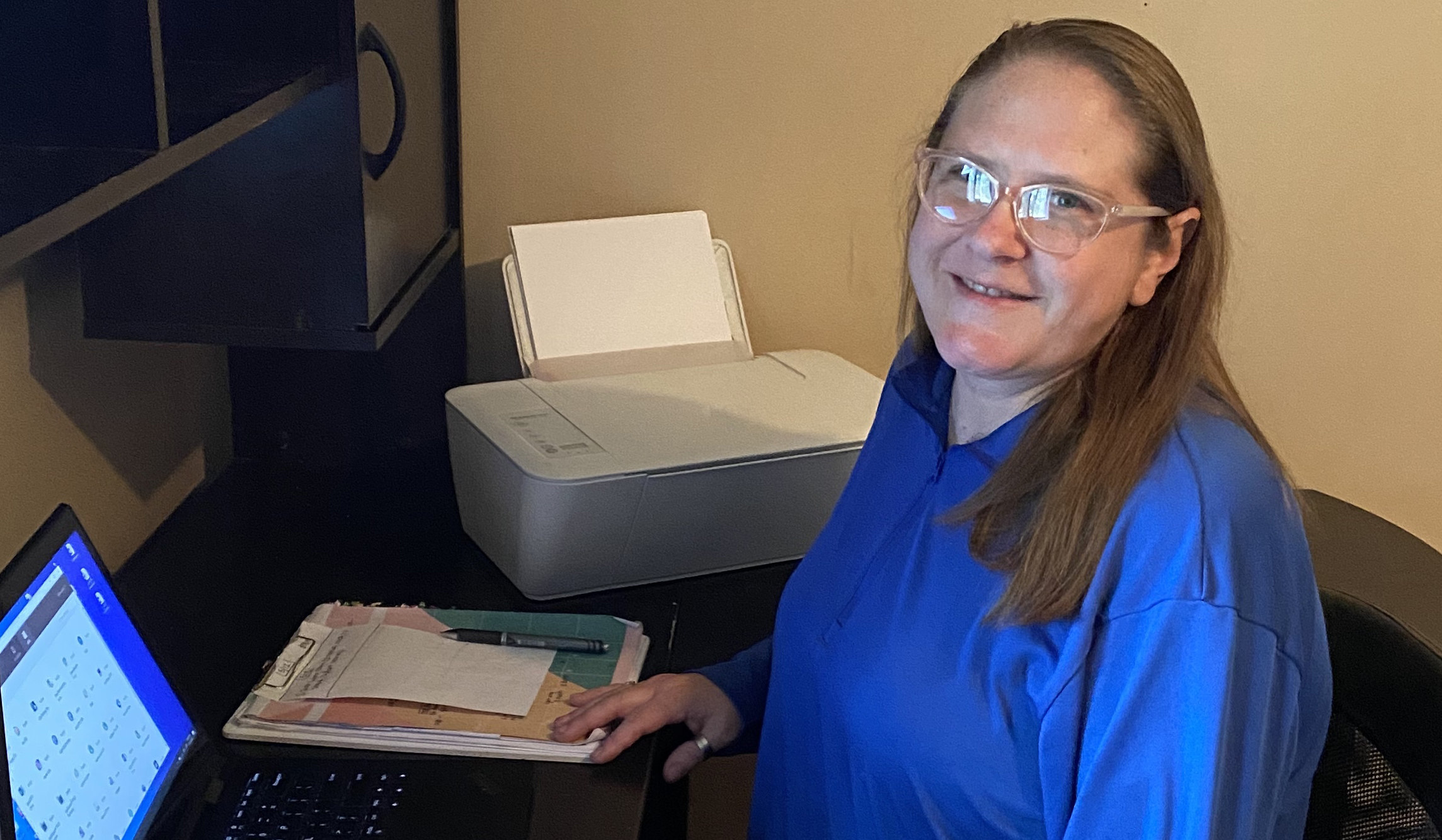Before the COVID-19 outbreak, Kristen Jaster made daily rounds to nursing homes and other facilities in Helena to do routine checkups and take care of common medical issues like infections.
Now the facilities have closed their doors to visitors to protect residents and help slow the spread of the coronavirus.
Jaster, a geriatric nurse practitioner with St. Peter’s Medical Group, has been able to keep seeing her patients because of a telemedicine pilot fast-tracked by St. Peter’s Health and Blue Cross and Blue Shield of Montana.
Instead of visiting in person, Jaster logs on to a platform called TytoCare. A nurse at the facility helps with a tablet and a handheld physical exam tool, allowing Jaster to hear the patient’s lungs and heart, take a temperature or get a view of a skin infection or inside the throat and ears.
“I can hear as clearly as if I was putting my own stethoscope to the chest,” Jaster says. “We’re keeping people out of the hospital, out of the emergency room, and decreasing their risk of being exposed not only to the coronavirus but also other infections going around the community.”
Improving access to care
The collaboration between BCBSMT and St. Peter’s started well before COVID-19. Both organizations wanted to improve access to care in their rural state through telemedicine, while keeping care local.
“The member is able to take advantage of all the convenience of telemedicine but continue to have continuity of care with their own doctors who they’re comfortable with,” says Bob Janicek, vice president of network operations at BCBSMT.
The pilot was supposed to start with a virtual care clinic at BCBSMT’s Helena headquarters as a proof of concept. The in-office clinic would have a video link to St. Peter’s Health and a TytoCare toolkit for BCBSMT employees to use to connect to an on-call St. Peter’s provider.
Next, St. Peter’s Health and BCBSMT planned to give 200 of the tools to their employees take home and use on themselves and their families. That way both groups could give feedback on their experience using the device.
COVID-19 changed those plans.
“We were able to quickly mobilize the pilot program into a real-life solution to take care of our community,” says John Doran, divisional vice president of external affairs at BCBSMT.
St. Peter’s Health began using the platform to maintain services after shutting down its primary care clinics for in-person visits. “Telemedicine is the right way to do that,” says Dr. Todd Wampler, medical director of primary care and chief of staff at St. Peter’s Health Medical Group.
In the first three weeks, St. Peter’s Health physicians used the new platform to conduct 1,700 virtual visits with their primary care patients.
The 200 devices earmarked for employees, meanwhile, were instead sent to skilled nursing and assisted living facilities so clinicians like Jaster can still see patients.
“Those are the extremely high-risk population for COVID-19, and they’re doing everything they can do to keep patients in the facility and not expose them to that risk,” Wampler says.
BCBSMT and St. Peter’s Health chose to pilot TytoCare because it allows patients to connect with their established primary care provider instead of a provider they’ve never met before.
“We’ve seen how powerful the connection is between patients and their primary care team,” says Dr. David Lechner, chief medical officer for BCBSMT. “A telemedicine platform that helps connect those specific teammates will likely have better outcomes than others.”
Telemedicine beyond COVID-19
Though the pilot didn’t go as planned, there’s still a lot to learn from how patients are using the technology now. With the toolkits in assisted living and skilled nursing facilities, BCBSMT can see if the devices might help members with chronic conditions.
And once employees return to office spaces, the concept of onsite virtual clinics will be promising once again.
“If there’s a positive to come out of the COVID-19 crisis, it can be the adoption and expansion of telehealth capabilities,” Lechner says. “Many visits can be done appropriately and professionally and with high quality with a video visit.”
BCBSMT is also giving $100,000 to independent practitioners in the state to expand telemedicine capabilities during the crisis. The medical groups could use the money to help implement TytoCare or another service.
“We believe care is local and we believe in the quality of our provider network in Montana,” says Janicek. “By providing new capabilities and technology, we expand our ability to deliver affordable health care.”


